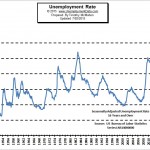
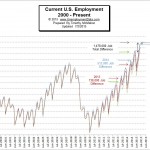
Historical Employment Levels Compared to Recessions
I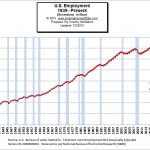
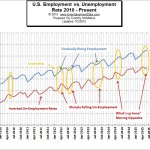
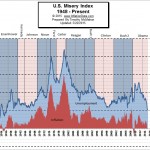
The two factors it uses are inflation and unemployment. High levels of price inflation (rapidly rising prices) will cause households to have difficulty affording the basic necessities while high unemployment will leave a high percentage of households without any income at all. High combined levels will cause havoc throughout the economy and a high level of distress, discomfort and political unrest. See Misery Index.
U3 vs. U6 Unemployment
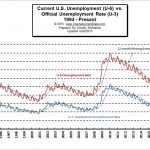
Seasonal Adjusting
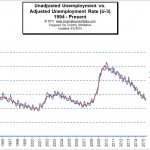
What is the “Real” Unemployment Rate?

- Monthly Historical Unemployment Rates from 1948 through the present.
